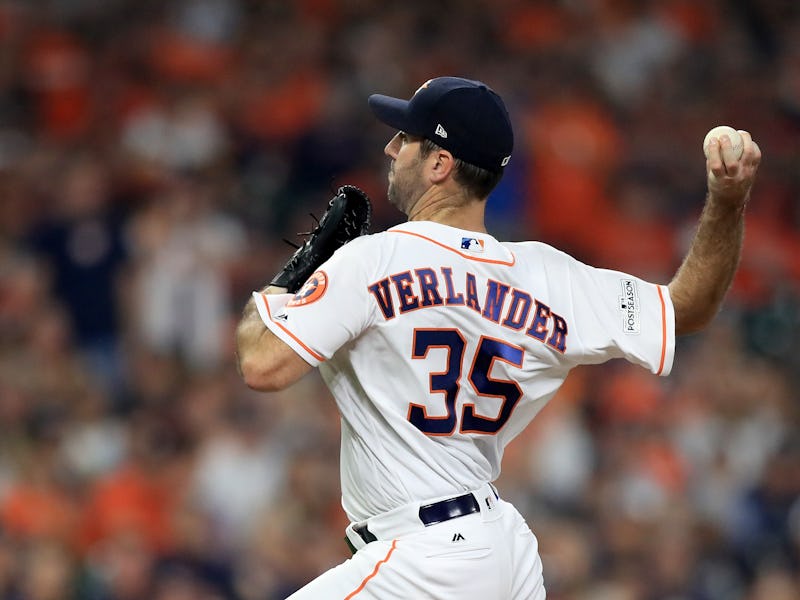Baseball Physicist Doesn't Buy Theory on 'Slicker' World Series Balls
“The evidence I’ve seen doesn’t seem to follow that the ball is slicker.”

Amid a World Series seeing an incredibly high number of home runs, pitchers claim a “slicker” baseball has made it harder for them to throw sinking pitches that tend to get them outs. But University of Illinois baseball physics expert Alan Nathan, Ph.D., tells Inverse that he doesn’t buy the claims.
On Sunday, Sports Illustrated reported that pitchers including the Houston Astros’ Justin Verlander and the Los Angeles Dodgers’ Yu Darvish, both ace starting pitchers for the championship contenders, have complained that the balls feel slicker than those used during the regular season. A ball that’s more slick is harder for pitchers to grip, which is essential to pitching a good breaking “slider” that breaks downwards over the plate and causes even the best batters to whiff.
“I noticed it especially throwing a slider. It didn’t feel the same,” Verlander told Sports Illustrated. “We’re in here signing World Series balls before the game, and it’s hard to get the ink on the ball sometimes.”
Both pitchers have been wildly successful throughout the year in getting batters to swing and miss at their sliders but haven’t been so lucky in the World Series. In their starts during the championship games, Verlander got only one swing-and-miss on his sliders, while Darvish didn’t get a single whiff and lasted less than two full innings after giving up four runs.
But Nathan, a professor of physics, says he has a hard time believing the pitchers’ theory.
Players on both teams in the World Series have complained about 'slick' baseballs making pitching difficult.
An extensive researcher into the physics of baseball and the ball’s movement, Nathan looked at Major League Baseball statistics from this year that tracked the way the ball moves on its way from the pitcher to plate, including its horizontal and vertical movement, release point, velocity and spin axis. He was particularly interested in the ball’s “spin axis,” which affects how much a slider breaks downwards when it reaches the plate more so than any of the other recorded movements that aren’t useful for a slider pitch.
The general idea is that, the higher degree of spin axis, more backspin the ball will have and the more it will break down. But Nathan didn’t see any major change in spin axis data between the regular season and World Series.
Darvish has complained about the baseballs feeling more slick.
“I would have expected that if the pitcher has difficulty getting a grip on the ball, then it would be the total rate of the spin that would be reduced,” Nathan says. “The evidence I’ve seen doesn’t seem to follow that the ball is slicker.”
Nathan also cast doubt on the “slicker ball” theory because of the lack of change in “air drag,” a force that works to slow down the ball as it travels through air. An altered ball would “presumably have other consequences” besides solely on the ball’s downwards movement.
Ditto for Justin Verlander.
Additionally, Nathan emphasized the difficulty in drawing such major conclusions from such a small sample size. After all, only five games have been played so far in the World Series, compared with the 2,430 games that take place during the regular season. Drawing ideas from the ball’s effects on sliders from just five games could be inaccurate and spurious, Nathan says.
The Sports Illustrated compares the data on home runs per at-bats in the regular season against that same percentage in the World Series to suggest that the slider may not be as effective in the World Series. There have been 15 home runs hit so far in the World Series — the ninth most in MLB history — but this championship series follows a record-setting regular season that saw the most home runs ever, when Verlander and Darvish say their sliders were breaking just fine.